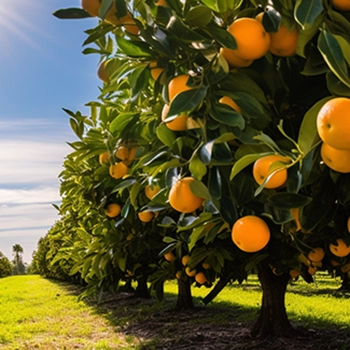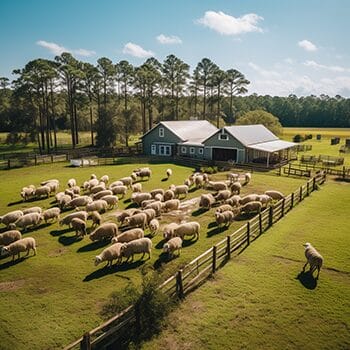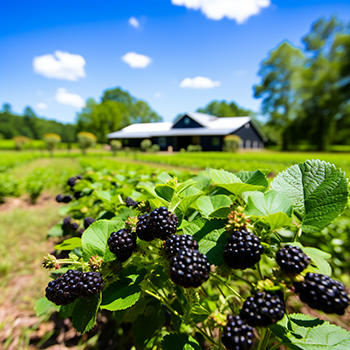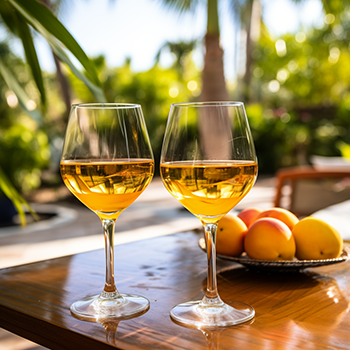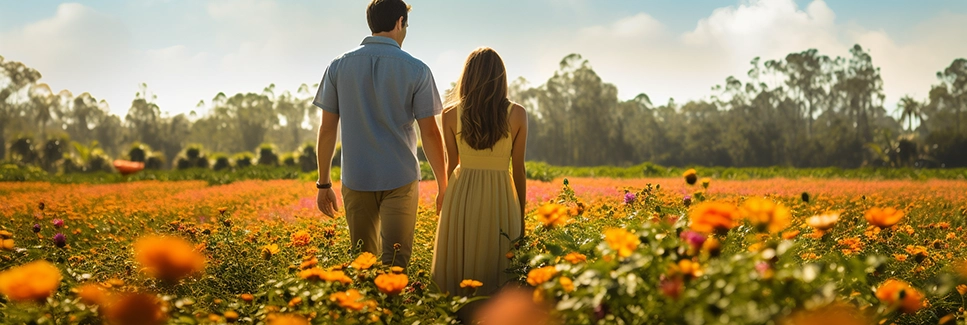
Flower Fields in Florida: U-Pick Fun to Festivals!
Flower fields in Florida are becoming more popular to visit and great destinations for u-pick fun and flower festivals. Whether you love picking your own vibrant blooms, or attending a delightful flower festival, we’ve got a list of Florida flower farms you may want to considering visiting someday soon.
Flower Fields Galore: Your Guide to Florida's Floral Delights
Here’s a list of some fantastic flower fields in Florida that are open to the public along with the type of fun they offer, and how to find more information.

Black Barn Blossoms - Vernon
This charming farm features a delightful “Sunflower Fall Festival” in October, complete with live music, vendors, and u-pick sunflowers. Veteran family-owned small business that grows their flowers without harsh chemicals. Find them on Instagram, Facebook or their website: Black Barn Blossoms

Ever After Farms - Seffner
Open year-round (weather permitting!), Ever After Farms offers a lovely selection of wildflowers, sunflowers, and greenery for u-pick bouquets. They also host special events and workshops throughout the year. Get more information on their website: Ever After Farms Flowers

Blossom Lane Farm - Baker
Blossom Lane Farm boasts over 12,000 square feet dedicated to sunflowers, zinnias, and a dazzling array of wildflowers. They offer tickets for u-pick opportunities, weddings and events, and find them at local farmer’s markets like Palafox Market on the weekends. More info: Blossom Lane Farm

Hunsader Farms - Bradenton
You’ll love visiting Hunsader Farms! They’ve got u-pick flowers (April-May), plus lots of other u-pick produce opportunities throughout the year (seasonal). There’s also a fresh produce market, petting zoo, ice cream shop, playground, antique barn making this a fun-filled day trip for the whole family. Look for their flower festival in April, and pumpkin festival on select weekends in October. Get more info and dates on their Hunsader Farms website here.

HarvestMoon Fun Farm - Masaryktown
HarvestMoon Fun Farm (Masaryktown, FL): Beloved local farm renowned for their seasonal events like the pumpkin patch and mazes, haunted nights andChristmas fun. Year-round there’s a petting zoo, gem mining and other fun activities. Then in May, visit for the annual plus their spring sunflower festival with u-pick options and a captivating sunflower maze, HarvestMoon Fun Farm also offers food vendors on weekends. More information on the HarvestMoon Fun Farm

Wesley Wells Farms - St. Augustine
Why Florida's Flower Fields Are So Popular to Visit
There’s a reason why flower fields in Florida are becoming increasingly popular destinations. Here are just a few reasons why:
- Capture Stunning Photos: The vibrant flower fields provide a breathtaking backdrop for photos that will make your social media followers envious. Imagine engagement photos amidst a sea of sunflowers or capturing precious family memories surrounded by colorful wildflowers.
- Celebrate Life’s Moments with Flowers: Fresh flowers add a special touch to life’s milestones. Commemorate birthdays, anniversaries, graduations, or simply brighten someone’s day with a beautiful bouquet of Florida-grown blooms.
- Spread Sunshine and Cheer: Hospitals and nursing homes are often filled with sterile environments. Bringing fresh flowers to someone recovering or spending time in these facilities can add a touch of beauty and cheer to their day.
- Say “I Love You” the Florida Way: There’s something undeniably romantic about presenting a hand-picked bouquet of sunflowers or wildflowers grown under the Florida sunshine. It’s a unique and heartfelt way to express your love and appreciation.
So, ditch the ordinary and embrace the extraordinary! Plan your next Florida adventure around a visit to a flower field in Florida. You won’t be disappointed!
As an Amazon Associate I earn from qualifying purchases at no additional cost to you.
We think you might also like…
Flower farming in Florida has a rich and diverse history that dates back to the early 19th century. The state’s warm climate and fertile soil have made it an ideal location for growing a wide variety of flowers. The first commercial flower farms in Florida were established in the late 1800s, primarily in the southern part of the state where the climate is more conducive to year-round flower production. Initially, flower farming in Florida focused on traditional crops such as roses, carnations, and chrysanthemums, which were in high demand for both domestic and international markets.
Over the years, the flower farming industry in Florida has evolved to include a wider range of flower varieties, including tropical blooms such as orchids, hibiscus, and plumeria. The state’s proximity to Latin America and the Caribbean has also influenced the types of flowers grown in Florida, with many farms specializing in exotic blooms that are popular in the region. Today, Florida is one of the leading states in the United States for flower production, with a diverse array of flowers being grown and distributed both domestically and internationally.
The history of flower farming in Florida is a testament to the state’s agricultural innovation and adaptability. From its humble beginnings in the 19th century to its current status as a major player in the flower industry, Florida’s flower farms have played a significant role in shaping the state’s agricultural landscape.
Key Takeaways
- Flower farming in Florida dates back to the late 19th century, with the establishment of commercial flower farms in the early 20th century.
- The most popular flowers grown in Florida include sunflowers, zinnias, marigolds, roses, and lilies, due to the state’s warm climate and fertile soil.
- Flower farming significantly contributes to the Florida economy, generating millions of dollars in revenue and providing employment opportunities.
- Sustainable practices such as drip irrigation, integrated pest management, and organic fertilization are widely adopted by flower farmers in Florida.
- Flower farmers in Florida face challenges such as extreme weather conditions, competition from imported flowers, and rising production costs.
- The future of flower farming in Florida looks promising, with a growing demand for locally grown flowers and increased interest in sustainable and eco-friendly practices.
- Visiting and supporting flower farms in Florida through farm tours, farmers’ markets, and purchasing locally grown flowers can help sustain the industry and promote the state’s agricultural heritage.
The Most Popular Flowers Grown in Florida
Florida’s warm climate and diverse growing conditions make it an ideal location for cultivating a wide variety of flowers. Some of the most popular flowers grown in Florida include roses, sunflowers, orchids, hibiscus, and plumeria. These flowers thrive in the state’s subtropical climate and are highly sought after for their vibrant colors and unique beauty.
Roses are one of the most widely grown flowers in Florida, with many farms specializing in different varieties and colors. Sunflowers are also a popular choice for Florida flower farmers, as they are well-suited to the state’s sunny weather and can grow to impressive heights. Orchids are another staple of Florida’s flower farming industry, with many farms dedicated to cultivating these delicate and exotic blooms. Hibiscus, with its large, showy flowers, is a favorite among both local and international buyers, while plumeria, known for its fragrant and colorful blossoms, is also highly prized by flower enthusiasts.
In addition to these popular flowers, Florida is also known for its production of tropical blooms such as bird of paradise, heliconia, and ginger lilies. These exotic flowers are in high demand for their unique shapes and vibrant colors, making them a valuable addition to Florida’s flower farming industry.
The Impact of Flower Farming on the Florida Economy
Flower farming has a significant impact on the Florida economy, contributing to both the state’s agricultural sector and its tourism industry. The flower farming industry in Florida generates millions of dollars in revenue each year, supporting thousands of jobs and providing a valuable source of income for local communities. In addition to providing employment opportunities, flower farming also contributes to the state’s tourism industry by attracting visitors who are interested in exploring the state’s diverse array of flower farms and gardens.
The economic impact of flower farming extends beyond the state’s borders, with many Florida-grown flowers being exported to international markets. This not only brings revenue into the state but also helps to promote Florida’s agricultural products on a global scale. Furthermore, the presence of flower farms and gardens adds to the overall appeal of Florida as a tourist destination, attracting visitors who are interested in experiencing the state’s natural beauty and diverse flora.
Overall, flower farming plays a vital role in supporting the Florida economy, providing employment opportunities, generating revenue, and promoting the state’s agricultural products both domestically and internationally.
Sustainable Practices in Florida Flower Farming
Sustainability is an important consideration for flower farmers in Florida, who are committed to preserving the state’s natural resources and minimizing their environmental impact. Many flower farms in Florida have adopted sustainable practices such as water conservation, integrated pest management, and organic cultivation methods to reduce their carbon footprint and promote environmental stewardship.
Water conservation is a key focus for many Florida flower farms, given the state’s reliance on irrigation for crop production. Farmers have implemented drip irrigation systems and rainwater harvesting techniques to minimize water usage and reduce runoff. Additionally, many flower farms have invested in water-efficient technologies and practices to ensure that their operations are as sustainable as possible.
Integrated pest management (IPM) is another sustainable practice that is widely used by Florida flower farmers to control pests and minimize the use of chemical pesticides. By employing natural predators, crop rotation, and other non-chemical methods, farmers are able to maintain healthy crops while reducing their reliance on harmful pesticides.
Organic cultivation methods are also gaining popularity among Florida flower farmers who are committed to producing high-quality blooms without synthetic chemicals or fertilizers. By using natural fertilizers, composting, and crop rotation, these farmers are able to grow beautiful flowers while promoting soil health and biodiversity.
Overall, sustainable practices are an integral part of Florida flower farming, ensuring that the industry remains environmentally responsible and resilient for future generations.
Challenges Faced by Flower Farmers in Florida
Despite its many advantages, flower farming in Florida also presents several challenges for farmers. One of the primary challenges is weather variability, as the state is prone to hurricanes, tropical storms, and extreme heat that can impact crop production. Farmers must be prepared to protect their crops from adverse weather conditions and adapt their growing practices to mitigate potential damage.
Another challenge faced by Florida flower farmers is competition from imported flowers. With the rise of global trade, many imported flowers from countries with lower production costs can flood the market, making it difficult for local farmers to compete. This has led many Florida flower farmers to focus on niche markets and specialty blooms that are not easily replicated by imported flowers.
Labor shortages are also a concern for many Florida flower farmers, particularly during peak growing seasons when additional help is needed for planting, harvesting, and packaging. Finding skilled laborers who are willing to work on flower farms can be challenging, leading some farmers to explore alternative labor solutions such as automation or mechanization.
Additionally, rising production costs and fluctuating market prices can pose financial challenges for flower farmers in Florida. From energy costs to transportation expenses, farmers must carefully manage their budgets to ensure that their operations remain profitable.
Despite these challenges, Florida flower farmers continue to innovate and adapt to ensure the success of their operations while contributing to the state’s vibrant agricultural industry.
The Future of Flower Farming in Florida
The future of flower farming in Florida looks promising as farmers continue to embrace innovation and sustainability to meet the demands of an evolving market. With a focus on niche markets and specialty blooms, many Florida flower farmers are finding success by catering to specific customer preferences and offering unique varieties that cannot be easily replicated by imported flowers.
Technology is also playing a significant role in shaping the future of flower farming in Florida, with many farmers adopting advanced irrigation systems, precision agriculture techniques, and automation to improve efficiency and productivity. These technological advancements not only help farmers streamline their operations but also reduce their environmental impact by conserving resources and minimizing waste.
Furthermore, there is growing consumer interest in locally grown flowers and sustainable agricultural practices, which bodes well for the future of flower farming in Florida. As more consumers seek out locally sourced blooms that are grown with care for the environment, Florida flower farmers have an opportunity to capitalize on this trend by promoting their sustainable practices and unique offerings.
Overall, the future of flower farming in Florida is bright as farmers continue to adapt to changing market dynamics while embracing innovation and sustainability to ensure the long-term success of their operations.
Visiting and Supporting Flower Farms in Florida
Visiting and supporting flower farms in Florida is a great way to experience the state’s natural beauty while contributing to its agricultural industry. Many flower farms in Florida offer tours and events that allow visitors to explore their fields, learn about different flower varieties, and gain insight into the farming process. These experiences provide a unique opportunity to connect with local farmers and gain a deeper appreciation for the hard work that goes into producing beautiful blooms.
In addition to visiting flower farms, supporting local florists who source their flowers from Florida farms is another way to contribute to the state’s agricultural economy. By purchasing locally grown flowers from florists or farmers’ markets, consumers can support small-scale growers while enjoying fresh, high-quality blooms that are grown with care for the environment.
Furthermore, participating in community-supported agriculture (CSA) programs or subscription services offered by local flower farms is a great way to receive regular deliveries of fresh flowers while directly supporting small-scale growers in Florida. These programs often provide consumers with a diverse selection of seasonal blooms that showcase the best of what Florida has to offer.
Overall, visiting and supporting flower farms in Florida not only allows individuals to connect with nature but also contributes to the sustainability of the state’s agricultural industry while promoting local economic growth.
If you’re interested in exploring the natural beauty of Florida, you might want to check out this article on the best paddling spots in the state here. It’s a great way to experience the diverse landscapes and wildlife that Florida has to offer, including the stunning flower farms that dot the countryside. Whether you’re visiting Fort Myers Beach or other areas of the state, paddling through Florida’s waterways is a unique way to connect with nature and discover the beauty of the Sunshine State.





